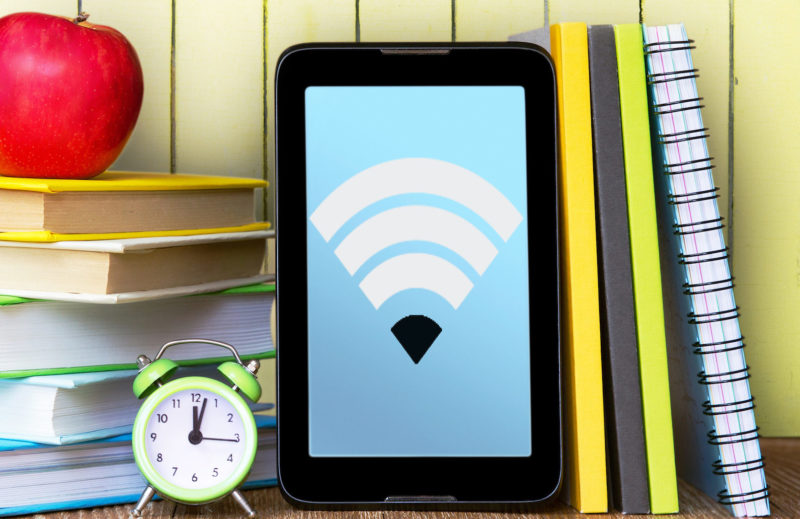A joint Assembly committee hearing on Oct. 14 offered an array of perspectives on the digital divide, which has long plagued California but is now being considered with new urgency due to the COVID-19 pandemic and widespread distance learning. New Reality: Students’ Access to the Internet for Distance Learning, held by the Assembly Committee on Communications and Conveyance and Assembly Committee on Education, also offered updates on efforts to close the gap.
“I think we all acknowledge this is a problem that needs to be addressed,” said Education Committee Chair Patrick O’Donnell (D–Long Beach), noting that many local educational agencies have gone above and beyond to work with insufficient available resources. “Everybody’s trying, it’s just not enough. Thus, the topic of today’s conversation.”
And while the issue is more pressing than ever, several legislators and advocates said a lack of connectivity has largely been ignored over the last few decades. “We must remember that there were districts already in this state that didn’t have access to the internet (before COVID-19),” said Assemblymember and former school board member Christy Smith (D–Santa Clarita).
Gauging remaining needs and exploring solutions
State Board of Education President Linda Darling-Hammond said the latest survey data from districts indicates about 300,000 California students still lack internet adequate for distance learning. Citing decreased survey participation from the beginning of the school year, however, State Superintendent of Public Instruction Tony Thurmond estimated that up to 1 million students could be lacking either computers or internet access. Both leaders said supply and demand issues are an obstacle exacerbated by the pandemic.
“The biggest challenge that our school districts are finding now is that they cannot get supplies fast enough. All the supply is on backorder,” Thurmond said. “School districts are still waiting to get devices that may not come in until December.”
Thurmond also announced that the California Department of Education, in collaboration with philanthropic partners, is preparing to launch an innovation competition to find “the next great solution” to the digital divide, with a focus on ideas that have not stalled out. “We must move to a place where we can close the digital divide once and for all,” he said, saying a larger effort is needed to build off of a patchwork of solutions.
A number of legislators from both committees shared enthusiasm and commitment for a comprehensive plan to address the divide via long-term funding through legislative efforts when the new session arrives in January 2021. In the last legislative session, however, two bills to expand broadband access died in the Capitol without even receiving a floor hearing. A third CSBA-supported proposal, to place a technology bond on the ballot to build out the necessary broadband infrastructure statewide and buy computing devices, wasn’t allowed to be amended into a bill.
CSBA will continue to advocate at the state and federal level to help LEAs address barriers to broadband connectivity that have left many students at an academic disadvantage in the 21st century.
Perspectives and solutions from the classroom
A panel featuring administrators and educators offered legislators an on-the-ground view of both current challenges and remedies to connectivity and device gaps.
While Los Angeles Unified School District partnered with Verizon to provide internet access to students and has spent $100 million on devices and hot spots, Michael Romero, Local District South superintendent for LAUSD, implored the state and federal governments to step up to the plate. “A student in any California school should be given the same basic equipment, just like every student should be able to walk into a school and get a textbook,” he said.
Angela Steagall, president of the Marysville Unified Teachers Association and a 23-year teacher at Marysville High School, said she experiences these inequities every day in the district with a mix of students living in both urban and rural homes. “If you bring up internet connectivity with my students, they will tell you the struggle is real. And if you ask teachers in my districts, they will echo the sentiment,” Steagall said. “I have students trying to join, or stay, in a Zoom session for longer than they actually spend in that session.”
On the solutions front, Imperial County Superintendent of Schools Todd Finnell presented on the county’s BorderLink Initiative and how it helped prepare schools for distance learning during the pandemic. Originally developed for those areas most in need of connectivity, the private education wireless network uses existing fiber-optic infrastructure throughout the county to provide student households with internet access.
Today, BorderLink allows 3,700 students to engage in distance learning every day, Finnell said. “We had no idea that a pandemic was on the horizon and the need for the network was to become mission critical for our schools overnight.”
Further hearing resources
- Read the Legislative Analyst’s Office report for the hearing, “Broadband Internet Access for Distance Learning”
- Chiefs for Change report, “#SendTheSignal: A Call for Federal Action to End the Digital Divide.”





